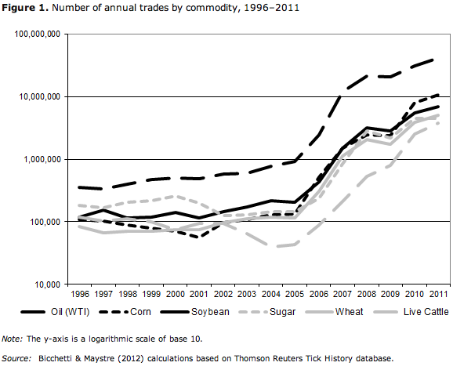Increased correlations in the commodities space
Post on: 16 Март, 2015 No Comment

Fund Links
Interview with Kirk Howell One of the toughest challenges for hedge fund traders in todays market environment is the high degree of correlation across asset classes. And its no different in commodities.
Kirk Howell, chief operating officer for Kiodex at SunGard (its commodity risk management unit), has looked closely at the correlation effect in commodities this year. Initially, when he saw prices fluctuating Howells instinct was to suggest that there was de-coupling. However, as I started to run correlation analyses I found the correlations to be really high, which leads me to believe that the macro overlay is still driving a lot of sentiment in trading. The market seems to have no memory from one day to the next.
Howell found that for Brent crude/copper, for example, the correlation was 0.63; significantly higher than previous years. This gives credence to the macro story. Year-to-date, the correlation between the S&P 500 and WTI crude is 0.63. In the last few months alone its been 0.7, which is phenomenal. There have been research papers written that suggest this is due to algorithmic trading but I frankly dont think that has much to do with it, says Howell.
There are, of course, exceptions to the rule. Agriculturals have boomed in recent weeks over threats of a real supply issue, but what makes commodities such a difficult market to trade is that the number of factors traders have to take into account are extremely high. Short-term price fluctuations make day-to-day price positioning nigh-on impossible to forecast. The fact that Brents price dropped nearly USD30 earlier in the year was understandable given that Iran was a genuine event risk; once things cooled down, the demand picture softened considerably. As Howell explains: That kind of thing makes perfect sense. But when you see USD3 moves day-to-day on what arent significant events, clients I speak to admit that they are sometimes at a loss to explain whats going on.
Whilst the debate for whether the end of the commodity super-cycle is in sight has support on both sides, Howell says he tends to lean towards the view that it is. Its a question of future demand: how will the eurozone hold, if at all, what impact will a slowdown in China GDP growth have on global demand, how will the US handle the fiscal cliff issue?
In the short-term, if you look at whats happening from the data available, youre seeing a worldwide slowdown in demand. The debt overhang has not gone anywhere and has in fact increased. I try to rationalise where you get growth out of that.
What that ultimately means, in Howells view, is that earning alpha in the commodities space for investment managers is only going to get to harder. Managers are going to be tested on how sustainable their edge is. I think were going to see a bit of a shakeup over the next year or so, states Howell.
One sub-group that he believes should be getting more capital allocation is the volatility trading group. They are able to take advantage of price moves in both directions and are a little less sensitive to delta one strategies. Investors, I think, should be allocating more money to these types of strategies in this environment.
CTAs should also be considered, but the trend following model has been cannibalised somewhat; there are, says Howell, seemingly more false break-outs in the market. Investors have to therefore pick the right CTA that they are confident will do well.
When crude hit USD80 it had all the signs that it would fall further but then it quickly reversed out and prices moved higher. Thats why its a challenge for trend-following CTAs














